Synagogues have served as essential centers of Jewish worship, community, and cultural life for thousands of years. Many of the world’s oldest ones hold unique stories, revealing the resilience and adaptability of Jewish communities across different regions and eras. Some of these ancient buildings still serve as places of worship, while others stand as historical sites or museums. From the earliest synagogues in Europe and the Middle East to long-standing congregations in North Africa and the Americas, each location offers a glimpse into the enduring legacy of Jewish faith and tradition. This list highlights the oldest synagogues around the world, each contributing to the rich tapestry of Jewish history and heritage.
Touro Synagogue
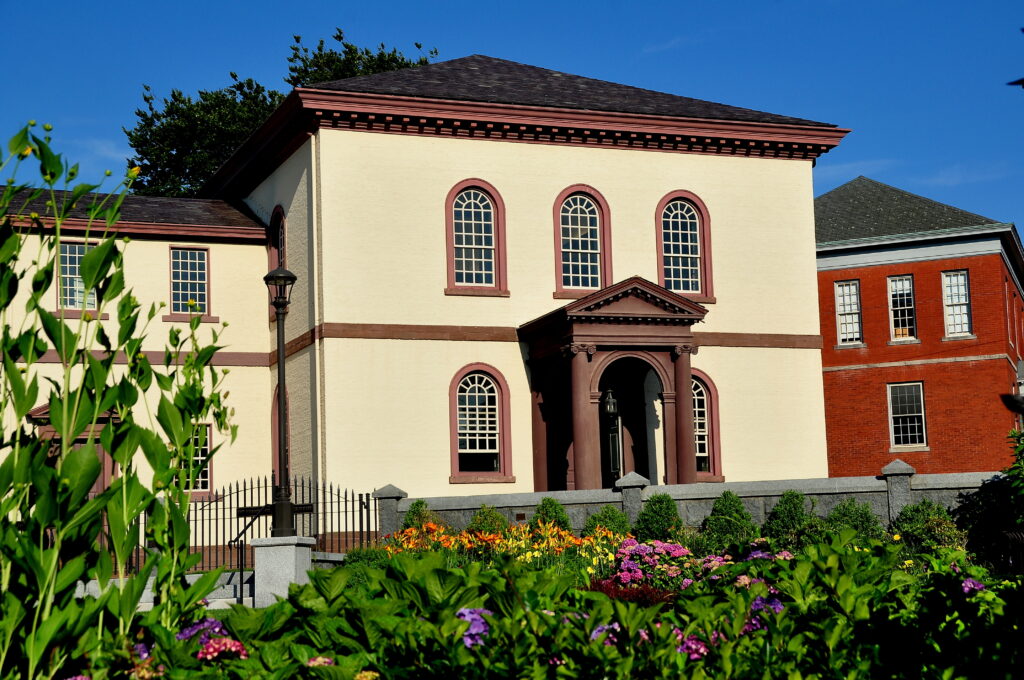
The Touro Synagogue in Newport, Rhode Island, completed in 1763, is the oldest synagogue building in North America. Designed by architect Peter Harrison, it reflects a blend of colonial and classical styles, marking a unique architectural achievement for the era. It was established by Sephardic Jews fleeing persecution in the Caribbean, with a layout that respects traditional Jewish worship practices. Known for its historical significance, it gained additional fame when President George Washington visited and later penned a letter affirming religious freedom, which remains a treasured artifact. Today, it is an active place of worship, historical site, and symbol of religious tolerance in the United States. The annual commemoration of Washington’s letter at Touro Synagogue draws both Jewish and non-Jewish visitors alike.
Mikve Israel-Emanuel Synagogue
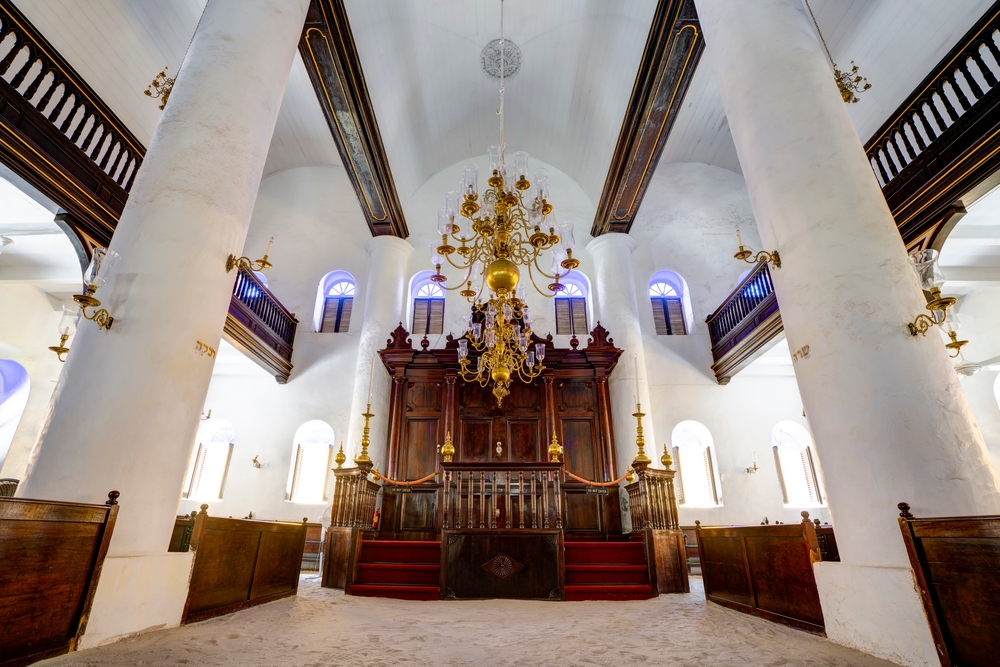
Located in Willemstad, Curaçao, the Mikve Israel-Emanuel Synagogue was established in 1651 by Sephardic Jews who fled Portugal to the Dutch Caribbean. It is the oldest continuously used synagogue in the Western Hemisphere and features unique architectural elements, including a sand-covered floor symbolizing the Exodus and serving as soundproofing for prayers. It also boasts elegant chandeliers, mahogany furniture, and a Torah dating back centuries, enhancing its historical atmosphere. It has remained a central institution for Curaçao’s Jewish community, providing a place for religious ceremonies, celebrations, and cultural events. The surrounding Jewish Cultural Museum offers visitors a deeper understanding of Jewish life in the Caribbean and the broader Sephardic diaspora. In addition to its religious functions, the synagogue stands as a landmark of resilience for Jews who settled in the Americas seeking religious freedom. It continues to attract visitors, both for worship and historical exploration.
Paradesi Synagogue

The Paradesi Synagogue, built in 1568 in Kochi, India, is the oldest active synagogue in the Commonwealth of Nations. Established by the Paradesi Jewish community, it was historically used by “White Jews,” a blend of Middle Eastern and European Jewish exiles. It is nestled in the area known as Jew Town and remains a rare active place of worship among Kerala’s historic synagogues. The building boasts beautiful features, including Belgian glass chandeliers, gold crowns gifted by various leaders, and hand-painted Chinese tiles, each uniquely detailed. It continues to play a vital role in preserving the legacy of Kerala’s Jewish community, acting as both a house of worship and a cultural site for visitors. With its historic grandeur and cultural significance, it stands as a testimony to the multicultural heritage of Kochi. It remains an emblem of religious and historical significance for both India’s Jewish population and visitors globally.
Altneuschul (Old-New Synagogue)
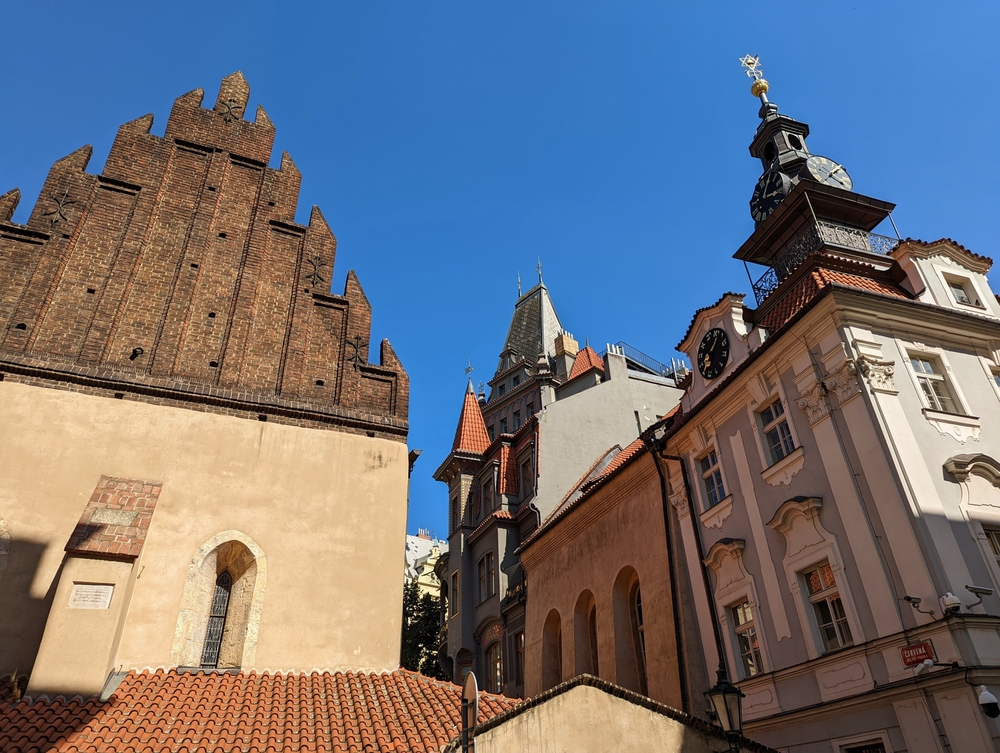
The Altneuschul, also known as the Old-New Synagogue, is situated in Prague, Czech Republic, and was completed in 1270, making it Europe’s oldest active synagogue. Built in a Gothic style, it has remained a vital spiritual center for the Jewish community in Prague since its inception. It is linked to the legend of the Golem of Prague, which, according to folklore, resides in the attic. This legendary creature is said to have been created by Rabbi Judah Loew ben Bezalel in the 16th century to protect the community from persecution. The synagogue’s name, meaning “Old-New,” refers to stones brought from Jerusalem, according to some traditions, adding a sense of mystique. During the Nazi occupation, it was reportedly preserved for its historical value.
Santa María la Blanca
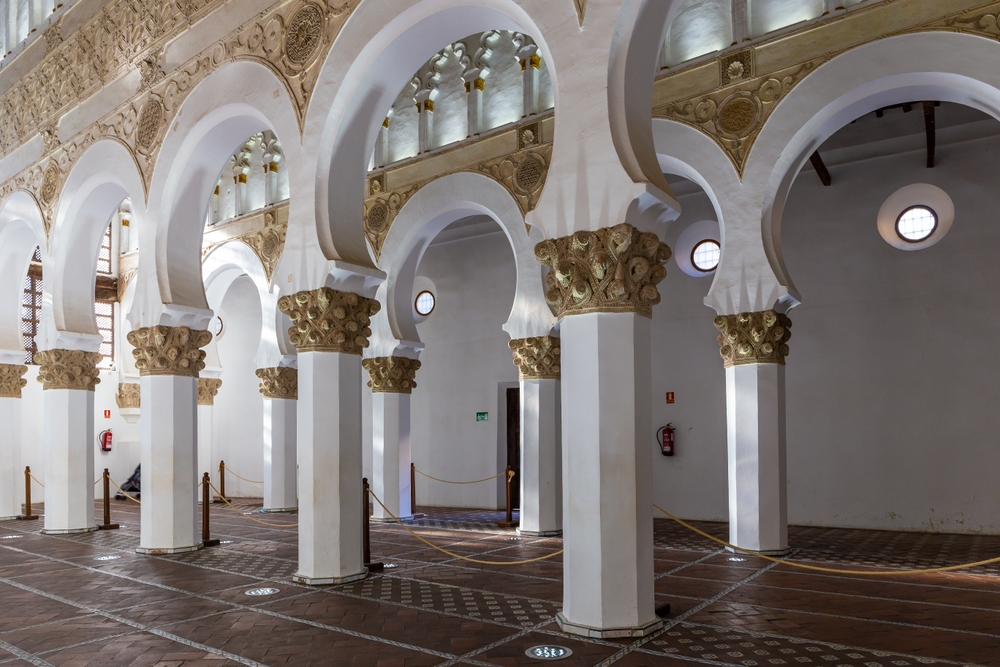
Located in Toledo, Spain, Santa María la Blanca was constructed in 1180 and originally served as the Ibn Shushan Synagogue. Built under Christian rule by Islamic architects, it exemplifies the unique confluence of three cultures—Christian, Jewish, and Muslim. It is renowned for its Moorish architecture, including horseshoe arches and whitewashed walls, embodying Spain’s medieval cultural fusion. Converted into a church in the 15th century following a wave of antisemitism, it remains under Catholic ownership and functions as a museum today. The building’s history reflects the often-turbulent relations between religious communities in medieval Spain. Although no longer an active synagogue, it is celebrated as a symbol of multicultural coexistence from a bygone era. The intricate artistry within its walls draws numerous visitors who appreciate its architectural and historical significance.
Ben Ezra Synagogue

Cairo’s Ben Ezra Synagogue, dating back to 882 AD, is famed for its deep historical and religious roots in the Jewish community of Egypt. Originally constructed as a Christian church, it was purchased by Abraham Ben Ezra for the Jewish community, transforming it into a center of worship. It is best known for the Cairo Geniza, a treasure trove of ancient manuscripts found in its storeroom in the late 19th century, providing invaluable insights into Jewish, Christian, and Islamic life in medieval Egypt. Featuring a unique basilica-style architecture, it includes a blend of Egyptian, Jewish, and Islamic design elements. Although it no longer serves as a regular place of worship, it is maintained as a museum and cultural site, commemorating Cairo’s once-thriving Jewish community. The building’s rich historical significance and architectural beauty attract both religious and academic visitors. Its preservation underscores Egypt’s layered religious history, making it a beacon of historical and cultural memory.
Dura-Europos Synagogue
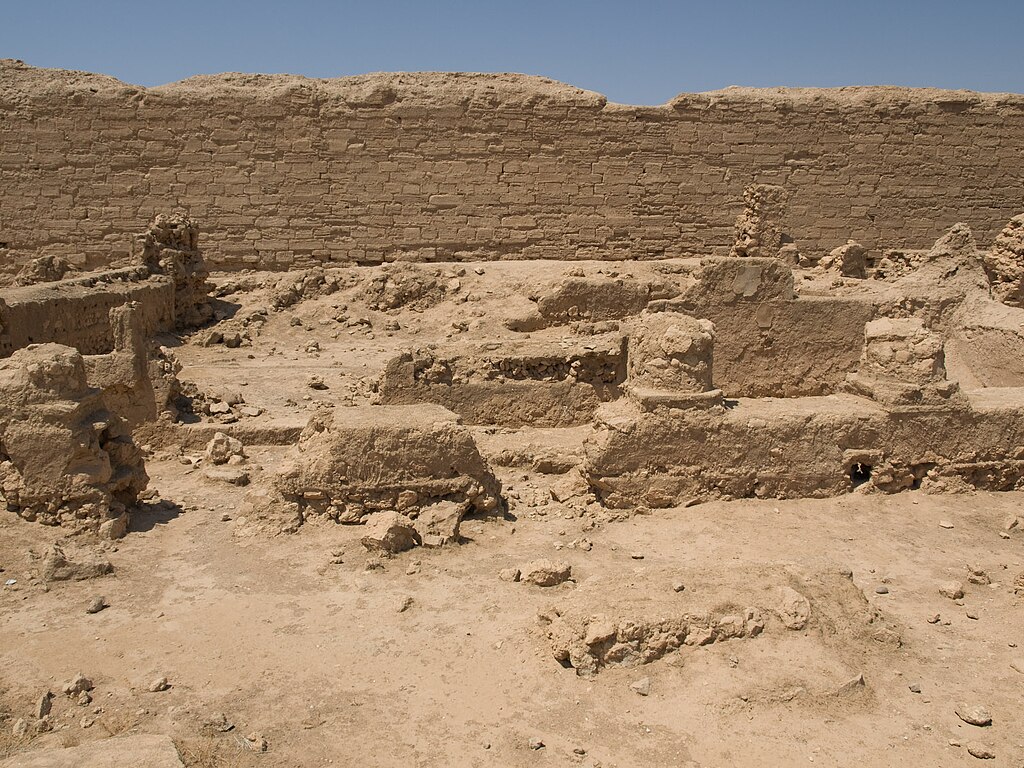
The Dura-Europos Synagogue in modern-day Syria is one of the oldest and most remarkable synagogues, dating back to around 244 AD. It is particularly renowned for its vibrant wall paintings depicting various Biblical scenes, a rare and invaluable feature for ancient synagogues. Located in a multicultural city on the Euphrates River, it highlights the integration of Jewish, Greek, and Persian influences within its artwork and architecture. The discovery of this synagogue in the 20th century challenged previous assumptions about Jewish art, revealing a more expressive and narrative-driven approach to religious representation in ancient Judaism. Unfortunately, due to its location in a conflict zone, the site has faced threats, although some of its frescoes are preserved in museums. Its murals remain some of the oldest and best-preserved depictions of Jewish life and stories from antiquity.
Ostia Synagogue
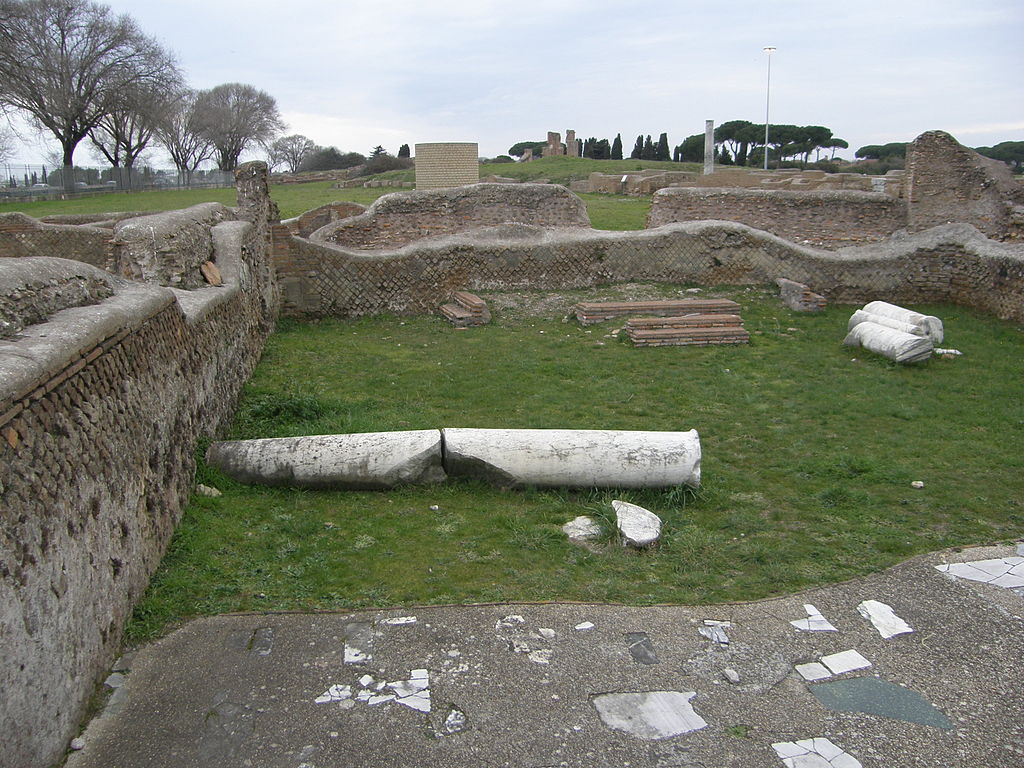
The Ostia Synagogue, located in ancient Ostia, Italy, dates back to around 41–54 AD, during the reign of Emperor Claudius. It is significant as the oldest known synagogue in Europe, with origins as a Jewish gathering place by the 1st century. Originally designed with a modest layout, the structure underwent multiple renovations, including a 4th-century addition of a Torah ark, indicating its continuous religious significance. Positioned near the Mediterranean coast, it served Rome’s Jewish community, particularly traders and travelers, due to its status as an important port city. The building’s architectural elements, including a monumental entryway and benches for congregants, reflect early synagogue design. While no longer active, it is preserved as an archaeological site, providing insights into early Jewish life in Imperial Rome. Today, it remains a key testament to the spread of Judaism across ancient Europe, still attracting historians and visitors interested in Jewish heritage.
Gamla Synagogue

Dating to around 23-41 CE, the Gamla Synagogue is one of Israel’s oldest and is located atop a strategic hill in the Golan Heights. Archaeological evidence suggests it was built during the Second Temple period and was a center for Jewish gatherings and religious activities. The structure’s location on a fortified hillside offered protection and a scenic view, providing an ideal spot for the local Jewish community to gather for worship. During the Jewish-Roman wars, the structure and the surrounding city faced intense conflict, ultimately falling to the Romans in 67 CE. Remarkably preserved, it features basalt columns and benches, demonstrating the architectural ingenuity of the period. Today, the site offers insight into early Jewish religious life and community structure in ancient Israel. Visitors to Gamla can appreciate both its historical significance and the natural beauty surrounding this ancient ruin.
Delos Synagogue
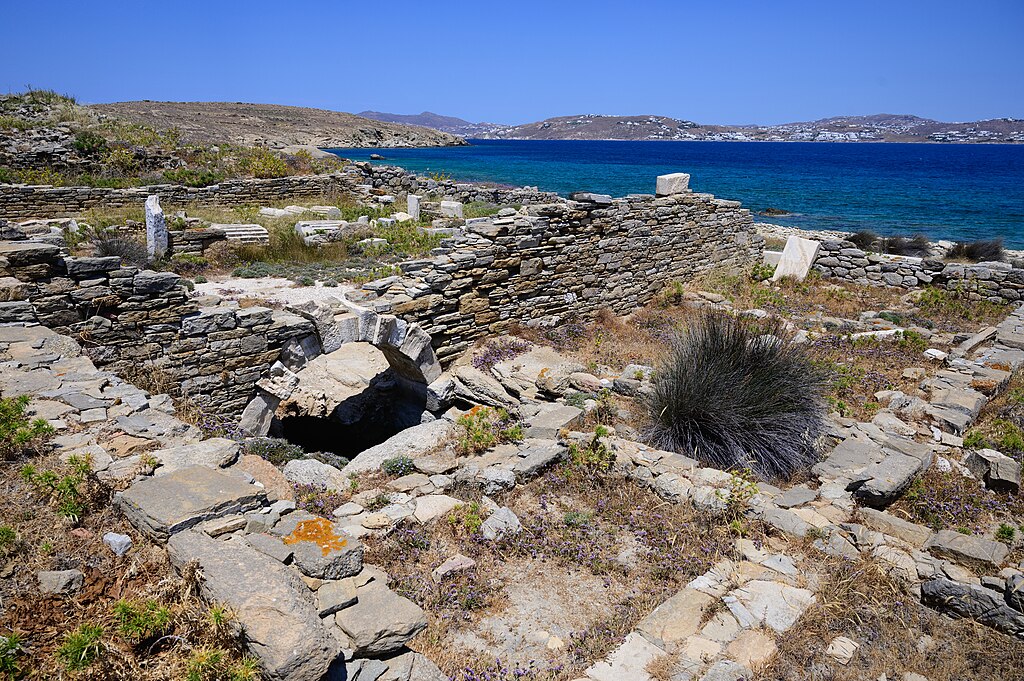
The Delos Synagogue on the Greek island of Delos is often considered one of the oldest synagogue buildings globally, dating back to approximately 150–128 BCE. Located in the ancient Aegean port city, it served as a cultural and trade hub where various religious communities coexisted. Its architecture, featuring benches along the walls and a large hall, suggests it was used as a place for communal gatherings and worship. Although debate persists regarding its precise use as a synagogue, many scholars agree on its significance within the Jewish diaspora of the Hellenistic period. Its location fostered connections between Jewish communities across the Mediterranean, making it a symbolic representation of early Jewish mobility and influence. No longer in use, it serves as a vital archaeological site that reveals the religious diversity of the ancient world.
This article originally appeared on Rarest.org.
More from Rarest.org
20 Exotic Birds in Danger of Disappearing from Our World

Exotic birds are among the most vibrant and unique species on our planet. However, many of these stunning creatures are at risk of vanishing forever. Habitat destruction, climate change, and illegal poaching have contributed to their dwindling populations. Read More.
15 Lesser-Known Species on the Brink of Extinction

Many species around the world are facing the threat of extinction, but not all of them are well-known. While efforts to save popular animals like pandas and tigers often make headlines, lesser-known species are quietly disappearing at an alarming rate. Read More.
20 Graceful Marine Mammals That Glide Through the Ocean`s Depths

The ocean is home to some of the most graceful creatures on Earth. Marine mammals glide effortlessly through its depths, showcasing their beauty and power. Read More.
